




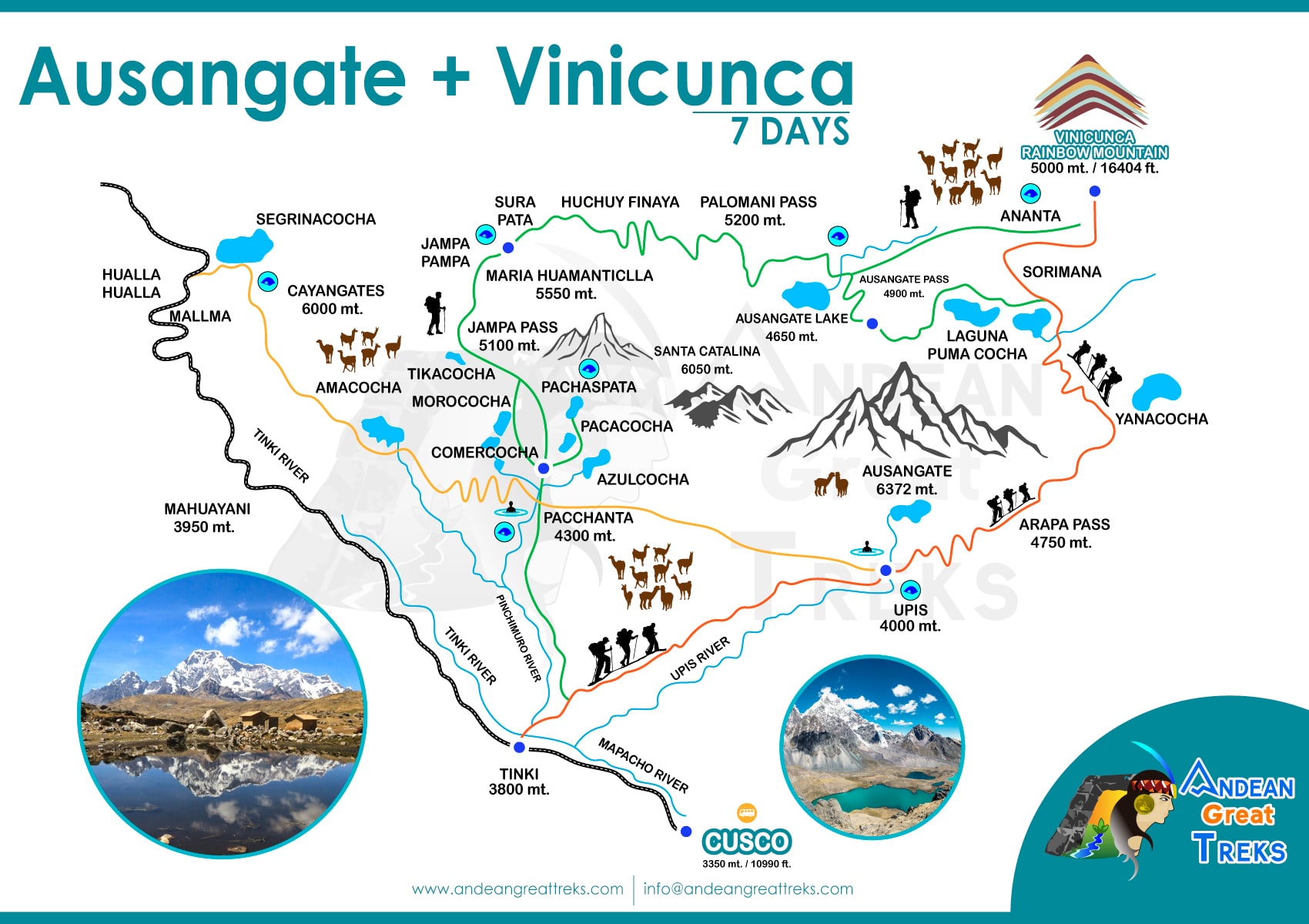 trip overview
included
trip highlights
activities
accommodations
itinerary
packing list
faq
essential trip information
best season to travel
price & availability
reviews
Reserve Online
trip overview
included
trip highlights
activities
accommodations
itinerary
packing list
faq
essential trip information
best season to travel
price & availability
reviews
Reserve Online
 CREATING AUTHENTIC TOURS IN PERU
CREATING AUTHENTIC TOURS IN PERU

The Ausangate trek is a “little” gem among the attractions of the Cusco region of Peru, is a challenging high altitude trek through 70 km of the Cordillera Vilcanota mountain range and features some of Peru’s most extraordinary scenery. Along the way, you’ll pass by small villages, glacial lakes, towering snow capped peaks, and herds of alpacas.
The Ausangate Trek is an adventure of a life time. Through this Peru trek, you’ll ascend and descend through the mountain range, finding sweeping Andean vistas, thermal lakes, mystical glaciers, green mossy passes and enormous snowy mountains. Along the way, you’ll catch a glimpse of interesting wildlife, like condors, chinchillas and groups of vicunas. You’ll also come across hidden Andean villages richly embedded in centuries-old traditions.
Rainbow Mountain is a very popular destination. Here you can see these iconic mountains with rich mineralization bringing red, orange and yellow hues across a seemingly endless mountain expanse. It’s truly a sight to behold.
This is a moderate to challenging trek, not technical, with several high passes and below freezing nights. This beautiful 7 day package starts in the small Andean village of Tinqui and takes you around Ausangate mountain and over multiple high passes. It is essential to be properly acclimatized for this hike, spending at least two or three days in Cusco (or equivalent altitude) before starting. The campsites are at high elevations and therefore will be quite cold in the evenings.
High Mountain Camping Tents:
On our Ausangate trekking adventures, we use the best outdoor trekking gear. Our camping tents have the best technology to withstand the harshest climates in the Andes. They are Tents that have a capacity for three people, but are only used by 2 people. For your comfort, an inflatable mattress and additional blankets are provided to insulate you from the cold. Because it is always different to experience the true spirit of Trekking, our company maintains that idea of not using Lodges or huts as other companies do.
Early transfer from your hotel in Cusco with 6:00 am departure. We drive for 4 hours on a new highway to Tinqui, passing Urcos Pass (4,000 m/13,123 ft) along the way. Tinqui is a village on the high plains “altiplano” east from Cusco and is where we will start our trek. We follow a wide, gently ascending path toward the northwest face of the impressive Ausangate mountain. We will have a small lunch around noon by the side of the trail. We will continue walking through fields and by scattered stone farm houses, and later in the day we will begin to see llamas and alpacas. We ascend gently to the Upis pass (4,435 m/14,107 ft) and camp at Upis Hot Springs (4,250 m/13,779 ft) where we will be surrounded by snow capped mountains (Ausangate and Maria Huamantilla).There are thermal springs at Upis where we can enjoy a soak at the end of the day. Happy hour at 4:00pm and dinner at 6:00pm.
Accommodation
Included Activities
Meals Included
Special Information
This trip visits places that are at high altitude, and as a result some people can suffer from altitude sickness, regardless of age or physical health.
After an early breakfast we begin our second day of the hike. You will hike very close to the Ausangate Glacier Peak and will have incredible views of this mountain as well as beautiful lakes and waterfalls. We may see some llamas, alpacas and wild vicuñas (the undomesticated ancestor of the alpaca) and perhaps a rare condor soaring above. We will have a 3-hour uphill hike to reach the first pass (4800m/15,748ft) where you will have magnificent views of the surrounding area. After taking a few amazing pictures we continue hiking gradually downhill for another 2 hours to our beautiful lunch spot. After lunch we hike for another 3 hours to arrive at our campsite at Puca Ccocha (Red Lake). This spot is one of the most beautiful campsites located at the skirt of the Ausangate peak and at the bank of the lake.
Accommodation
Included Activities
Meals Included
Wake up early with a hot cup of coca tea to start one of the most beautiful days of the trek, enjoying majestic views of some of the highest peaks in the Andes and depths of the beautiful valleys. This morning we will summit the Puca Pass. After an early breakfast we begin our 2-hour steep climb to the Puca Pass at (5050m/16,568ft). Along the way we have gorgeous views of turquoise lakes and the Ausangate glacier. Once you reach the summit of this mountain, you will be located right in front of the Ausangate Mountain and you can enjoy the views of Chillca Valley, with alpaca grazing along these hills. Also, from this pass you will see the beginning of the Rainbow Mountain range with their strikingly striated colors. After taking some great pictures we continue gradually downhill for another 2 hours until we reach our lunch spot located at Anantapata 4400m/14,435ft with amazing views of green hills and snow-capped peaks. After lunch and a little rest and relaxation, we will hike gradually uphill for 11⁄2 hours until we reach the the Warmisaya (aka Pitumarca) pass 5050m/16,568ft. After enjoying the views at the top we descend for 20 minutes to Yanacocha lake where we set up camp for the night. After dropping our bags we take our gradual 1 hour sunset hike to the Rainbow Mountain Pass and watch as the sun sets over the stunning Rainbow Valley. Once we have finished enjoying the view, we hike 45 minutes back down to camp at Yanacocha to have happy hour (tea and snacks) followed by a hearty dinner.
Accommodation
Included Activities
Meals Included
After a very early breakfast (5.00 am) we hike 1 hour up to the Rainbow Mountains (Vinicunca Mountains or Montañas de Colores) again to see the beautiful Rainbow Valley at sunrise! Enjoy the view for an hour without the crowds as we are one of the first groups to arrive. Your guide will walk you to the best spots to get the perfect postcard pictures of these incredible mountains and the other surrounding peaks. Your guide will explain what makes these mountains so unique: they are composed of various minerals, which make different colors of stone striations. This is definitely one of the most stunning places in South America and one of the most beautiful natural attractions in Peru. There are Rainbow Mountains in only a few other locations in the world. After enjoying the sunrise view we hike downhill for approximately 3.5 hours until we reach Quesouno where we stop for lunch. After a hearty lunch and a well-deserved rest, we hike 2 hours uphill to Ausangatecocha (part of the Ausangate Trail). Along the way you will see beautiful mountain scenery, small streams, herds of llamas and alpacas and snow-capped peaks. At Ausangate cocha we camp by a beautiful dark blue/green lake for the night with views of the Ausangate Mountain.
Accommodation
Included Activities
Meals Included
After breakfast we begin a steep climb for 2-3 hours on glacial moraine to the Palomani Pass (5,350m/17,552ft). From the pass there are extensive views of all the peaks in the Cordillera Vilcanota. We then descend for 2 hours on a steep trail into the Huchuy Phinaya Valley where we will stop for lunch, surrounded by beautiful mountain views. From our lunch stop we will have a view of “Las Dos Gemelas” or the two twin mountains. After lunch we hike another 2 hours to our campsite, 45 minutes of which is a steep climb and the rest is a gradually uphill trail. Along the way you see streams and a small waterfall, chinchillas, llamas, alpacas, and snow-capped mountains (the three peaks). We camp tonight at Comercocha.
Accommodation
Included Activities
Meals Included
After some hot coca tea and a good breakfast we hike for 1 hour on a varied path through the Pampacancha Valley 4,300 m/14,107 ft where you will see wide open spaces and lots of llamas and alpacas. Once we pass through this valley we begin climbing up to the highest point of the trek, the Qampa Pass (5,400 m/17,716 ft) for 2 hours. At this pass we have incredible views of The Three Peaks, the Pacchanta Valley, and will hopefully get a glimpse of some wild vicuña and deer, and if we are really lucky, a condor. We then descend gradually through the Pacchanta Valley, walking between Ausangate Mountain and the Two Twin Mountains for 3 hours until we get to our campsite at Pacchanta (4200m/13,780ft). Along the way we see glacial moraines, beautiful lakes, and snow- capped peaks. This campsite is near the Pacchanta hot springs where you can take a well-deserved soak with stunning views of the Ausangate Mountain if you wish to (entrance fee – 10-20 soles).
Accommodation
Included Activities
Meals Included
After a good breakfast we begin hiking on a wide dirt trail (village road) for 3-4 hours until we reach the small town of Tinqui (3600m/11,811ft). Along the way you will see a lot of local people, farms, farm animals and many children will come running up to greet you. Please do not give them sweets as they do not have access to dental care, but you are welcome to share other items with them (fruit, pencils, etc). At Tinqui we enjoy a nice lunch, after which we take our private transport back to your hotel in Cusco (arriving around 4pm) – about a 2.5 hour drive that provides nice views of the Andes, passing some traditional villages along the way.
Included Activities
Meals Included
When packing for your Ausangate Trek to Rainbow Mountain , you should keep in mind that it is best to dress in layers due to the weather variation. The variety of clothes that you must pack to dress in layers is key to your walk, from the morning when it is quite cold until mid afternoon when the temperatures rise and reach their peak and then freeze again at night. Stratification is also useful as you ascend high passages that are exposed to winds or descend into shady valleys.
Effective stratification only works if each layer allows moisture to pass and escape into the external environment. In fact, the best layered clothing, such as wool, promotes moisture transfer through its absorbent properties. Cotton and denim absorb moisture and, therefore, should be avoided.
 warm jackets
warm jackets
 Hydration bladder
Hydration bladder
 wool socks
wool socks
 camera
camera
 scarf
scarf
 first aid kit
first aid kit
 hiking shoes
hiking shoes
 Dry bags
Dry bags
 Trekking Poles
Trekking Poles
 sun cream
sun cream
 Snack
Snack
 sun hat
sun hat
 bathing suite
bathing suite
 rain coat
rain coat
 Sandals
Sandals
 insect repellent
insect repellent
 Passport
Passport
 Down Jackets
Down Jackets
 toilet paper
toilet paper
 daypack
daypack
 Wool cap
Wool cap
 head lamp
head lamp
 gloves
gloves
 sun glasses
sun glasses
 cap
cap
 extra cash
extra cash
 Trekking pants
Trekking pants
The AUSANGATE TREK is an adventurous route offering stunning Andean vistas, hot springs, turquoise lakes, mystical glaciers, green mossy passes and enormous snowy mountains. Along the way, you’ll catch a glimpse of interesting wildlife, like condors, chinchillas , herds of llamas, alpacasand, and wild vicuña. You’ll also come across hidden picturesque Andean villages and traditionally dressed Quechua people, richly embedded in centuries-old traditions. The highest point of the trek is 16,800 feet above sea level and the highest campsite elevation is at 15,255 feet.
A voyage to Ausangate mountain is one of natural beauty, living history and ancient spirituality. Considered challenging, this trek is recommended for seasoned hikers only, who have experience hiking at high elevations. Ausangate is actually the 5th tallest mountain in Peru, standing at 20,945 feet above sea level
In this part Andean Great Treks has tried to answer the most frequent questions that our travelers have asked us about the Ausangate trek, if you do not find any question, let us know through our mail so that we can help you with pleasure.
The Ausangate Mountain is a natural attraction that is located in the district of Ocongate, within the province of Quispicanchi, in the department of Cusco. That snow-capped mountain is part of the Cordillera de Vilcanota and, according to an ancient legend, it was the brother of the Salkantay snow-capped mountain.
The Ausangate Mountain, has a height of 6,384 meters above sea level; and is considered an apu, or protective deity of the peoples that surround it; as well as the most representative mountain in the region. Its size is such that it can be appreciated even if one is in the Sacsayhuamán Fortress, not in vain is it considered the fifth highest mountain found in Peru.
This beautiful snow-capped Cusco impresses the eye, due to its incredible natural formations; In it, there are not only beautiful water mirrors such as the Sivinicocha, with turquoise waters, but also stone forests, glaciers and high plains that seem to make this natural attraction a paradise on earth, especially for those tourists who are interested. for adventure sports since the geographical features of Ausangate make it ideal for practicing sports such as rock climbing, ice climbing, trekking, among other activities.
The Ausangate Mountain appears before our eyes as a mountain challenge; It is known that the first attempts to ascend it occurred in the early fifties of the last century, there were two frustrated first attempts to conquer the top of the mighty Apu, it was not until 1953, when a German expedition achieved the goal, climbing the mountain on its southern slope, in posterity, new routes were opened for the conquest of the Apu, however, only in 1983, thirty years after the first ascent, Peruvian feet crowned the top of the majestic snow-capped mountain.
At present, different companies have been promoting the Ausangate route as a trekking route, one of its purposes is that the expeditionists manage to surround the snow-capped mountain, although to date, few seasoned visitors have dared to follow it. Those who are interested in climbing this snowy mountain must know that they must have had enough time to practice before, since the Apu is not a snowy peak for beginners; so if you are an intermediate level mountaineer, it is recommended that you go in the company of a larger group of people experienced in the field.
In order to reach this beautiful mountain, it is necessary, if one is in the city of Cusco, to go to Urcos, this first trip can be done by bus, and the duration of the journey to the place is one hour. Once in Urcos, continue to Ocongate and from here to Tinke, also by bus, spending three more hours on the way. Already in Tinke you have to pay for the right of entry, this has an approximate cost of ten soles, quite apart from the services of tour guides that are hired.
The Inca tradition tells that Salkantay and Ausangate were two brothers who lived in Cusco. After a terrible time of drought, both ventured into strange lands to save the town from the crisis. Salkantay went north and found the jungle, and there, Veronica’s forbidden love; instead, Ausangate went south, to the highlands, and there he found a large amount of Andean food, such as camelid meat, corn, and potatoes, which he sent to the population.
The Chillca community, made up mostly of llama and alpaca farmers and herders, is known as the guardian of these beautiful landscapes. Every year on the slopes of the mountain the Qoyllur Ritti festival -“star snow” in Quechua- is celebrated before the Corpus Christi festival, during which thousands of people make a pilgrimage to the Sinakara temple where the painting of the Crucified Christ engraved on a rock. This pilgrimage has been named Intangible Cultural Heritage of Humanity in 2004.
The Apu Ausangate is the fifth highest mountain in Peru at 6,384m, and is the highest of the 6 peaks that exceed 6,000m located in the Cordillera del Vilcanota in the Cusco region. The first ascent was made in 1953 and was led by the famous Austrian climber Heinrich Harrer, part of his first group conquered the north face of the Eiger, which was the story and script for the book/film “Seven Years in Tibet” (The renowned actor Brad Pitt was the protagonist of this film).
Ausangate is the most famous and well-known snow-capped peak in Cusco, the normal route to reach its summit is not very technical and difficult, but a lot of resistance and strength are needed to break the path with loose or accumulated snow to the summit stalls. Ausangate is the main Apu in Cusco and can be seen from many places in the city. It is rarely visited by tourists in this part of the region but is becoming popular as a destination to do the Circuit Trek around the snow capped in the dry season.
The altitude is insane. I’ll mention again that this trek never drops below 14,000 feet! Many of the passes are grueling and tower over 16,000 feet. The mountains are Apus, or Gods, to the Indigenous, so go in with the mindset of respecting them in this regard. By the way, the mighty mountain of Ausangate is a staggering 20,945 feet (6,384 m).
Ausangate is surrounded by extensive and luminous turquoise lakes such as Sibinacocha, as well as stone forests, glaciers and vast plains that impress with their magical landscape. Reaching the top of Ausangate involves a journey of 5 days and 4 nights along 70 km, which is why it is considered one of the most challenging trekking routes in the Andes. However, during the walk, the traveler witnesses incredible postcards: multicolored mountains, herds of alpacas and desert cliffs that together create an incredibly beautiful outdoor experience from start to finish.
The landscape is stunning. The imposing chain of mountains of the Cordillera de Vilcanota with its snow-covered peaks takes the breath away from those who dare to explore it.
There are more than 400 glaciers that extend between the Cusco and Puno regions. One of them is Ausangate, the guardian mountain of Cusco that gave its name to the regional conservation area created in December 2019, over an area of 66,514 hectares distributed between the provinces of Quispicanchi and Canchis, in the department of Cusco
Ausangate is not like some other high-altitude treks e.g. Everest Base Camp trek or Annapurna Circuit that start at lower elevations and gradually gain altitude. The entire route of the Ausangate trek goes over 4000m. Good acclimatization is the key here.
Altitude sickness, or Acute Mountain Sickness (AMS), is a health effect that can arise at high elevations. Minor symptoms include headache, fatigue, difficulty sleeping and dizziness. More progressed cases can result in vomiting, shortness of breath and high altitude cerebral edema, which is associated with lethargy, nausea and disorientation.
Altitude sickness occurs in 20 percent of people at 8,000 feet and 40 percent of people at 10,000 feet. For a hike like the Ausangate trek, it is highly likely that you will experience some form of altitude sickness, as elevations reach as high as 16,800 ft. For this reason, it is important to acclimate properly, take your time on the trail and take measures to combat symptoms.
The possibility of experiencing altitude sickness is one of the most common concerns for visitors to Rainbow Mountain. Altitude sickness is caused by a lack of oxygen at higher altitudes and can set in at altitudes above 2,500 meters (8,000 feet) above sea level, putting Rainbow Mountain’s altitude of 5,200 meters (17,060 feet) well above the minimum elevation where it can occur.
Many people arriving in Cusco by bus from Lima or the Amazon get altitude sickness. It is normal if you fly or go by bus from a low altitude to a location more than 3000m above it. Our body needs time to adjust to the decreasing amount of oxygen available due to the altitude, the higher you go the lower the air pressure and the less oxygen available to you.
Symptoms
There are three types of altitude sickness; Mild Altitude Sickness, HAPE and HACE – the last two are lethal. The Mild Sickness is the first stage that if you don’t take precautions, it can develop into one of the lethal types. Having Mild Altitude Sickness is similar to having a hangover; headache, nausea, fatigue. Many people feel it for the first couple of days in Cusco.
How to prevent
As a foreground, the point from where this excursion will start is Cusco, which is located at an altitude of 3500 masl.
It is there where you will have to acclimatize before starting the Ausangate Trek, together with your friends and all the crew that will accompany you.
The first day you will start a trek from the towns of Pacchanta (3980 masl) towards the mythical mountains of Ausangate, so base camps are usually located at an average height of 4120 to 4350 masl.
On a normal day in the Ausangate Trek circuit you gain height from 800 to 1000 meters per day. The highest steps exceed 5,000 masl. With all this data, it is considered that the Ausangate route is to be well prepared and adapted to the climates and challenges of the Andes.
Like most trek in the region, the best time to do the Ausangate trek is in the dry months between May and September. Unlike other popular treks, the Ausangate trek is very quiet, even in peak season.
In the shoulder months of April and October weather is still pleasant and the trek is very possible. However, because of its altitude you’ll have to contend with freezing nights, even in the dry season. Because of the altitude and snow, the trek is best avoided in the wetter colder season between November and February.
Temperatures during the day in the dry months are usually quite mild and visibility is very high. Because of the height you’ll want to make sure you are wearing layers, especially for the colder nights.
Because of its high altitude and frigid air, rainy season in the region often translates to snowfall for Rainbow Mountain. Visitors to Ausangate Trek and Rainbow Mountain should come prepared with clothes for all weather, as conditions can also change quickly. For more information about when to visit, make sure to check out our blog on the best time to visit Peru.
The weather at Ausangate Trek and Rainbow Mountain is very unpredictable, changing frequently and quickly. You might see warm weather and sunny skies one minute and then cloudy skies and snowfall the next. The best idea is to make sure you’re prepared for all weather by dressing in layers.
In the Vilcanota Range, there is a dry season and a wet season. The dry season is between May and September, and is considered the best time to hike in the Andes. Keep in mind, however, that the dry season, containing Peru’s winter months, is also the colder time of year. The coldest months are May through July. Expect the days to be cool, no warmer than 40 degrees F, and the nights to drop to freezing temperatures as low as 10 degrees F.
The rainy season is between October and April. While the rainy season is warmer, it can still be cool at night. In fact, there can be heavy snow as well given the elevation. The rain and snow can cause muddy conditions on the trail and even partial closures. It is especially inclimate between January-March, with February bringing the most precipitation. The shoulder months of October and April bring more moderate weather with mixed rainy and dry days.
Dry Season – June to August
Should Season – April to May & September to October
Rainy Season – November to March
Nighttime: 39℉ (4℃)
The Ausangate Trek traces through high elevation landscapes ranging between 10,334 ft to as high as 16,800 ft above sea level. The land surrounding the mountain features Andean uplift, glacial valleys with hanging glaciers, Permian formations and cretaceous limestone forests. The trail takes hikers through landscapes bursting with glaciers, snow capped mountains, thermal lakes, high flatlands and lush green valleys.
Peru is famous for being home to many exhilarating treks. Though not as popular as some of the other trails accessible from Cusco, the Ausangate trek is just as worthwhile. In fact, being less crowded with tourists is part of its charm. It guarantees travelers who venture on this remote journey a more unique experience. While you won’t come across Incan ruins, it makes up for it with breathtaking natural scenery and spiritual significance. Spot spectacular snow-capped peaks, gorgeous lakes, and wonderful wildlife, including herds of llamas and alpacas. The centerpiece of the trek is the mighty Apu Ausangate, one of the tallest mountains in Peru.
The Ausangate Trek is a high altitude 70km hike in the Peruvian mountains near Cusco with an average altitude of over 4000m. Unlike most other hikes in the region Ausangate is not about Inca ruins, it’s all about beautiful scenery; snow peaks, glaciers, colorful mountain lakes, and the Rainbow mountain. If you like beautiful nature, going off the beaten track and hiking this trek is for you.
Ausangate is one of the most challenging hikes around Cusco but at the same time one of the most rewarding in sense of scenery. If you have any doubts about hiking Ausangate on your own read this article we hope it’ll help you decide whether to do an independent or guided trek. For more info on all our favorite hikes in Peru.
Basic Information
There are circuits from 3 to 7 days, which have different starting and ending points. It is advisable to do each circuit with a certified and highly experienced tour operator. The Ausangate Trek is a challenging high altitude trek through 70 km of the Cordillera Vilcanota mountain range and features some of Peru’s most extraordinary scenery. Ausangate is an off-the-beaten track hiking alternative with minimal foot traffic that allows you to carve into the mystical side of an ancient Andean world.
A voyage to Ausangate mountain is one of natural beauty, living history and ancient spirituality. Considered challenging, this trek is recommended for seasoned hikers only, who have experience hiking at high elevations. The route takes you through the Cordillera Vilcanota, or the Vilcanota Mountain Range. Ausangate is actually the 5th tallest mountain in Peru, standing at 20,945 feet above sea level.
Through the Ausangate trek, you’ll ascend and descend through the mountain range, finding sweeping Andean vistas, thermal lakes, mystical glaciers, green mossy passes and enormous snowy mountains. Along the way, you’ll catch a glimpse of interesting wildlife, like condors, chinchillas and groups of vicunas. You’ll also come across hidden Andean villages richly embedded in centuries-old traditions. The highest point of the trek is 16,800 feet above sea level and the highest campsite elevation is at 15,255 feet.
Want an in-depth insight into this trip? Essential Trip Information provides everything you need to know about this adventure and more.
View Essential Trip InformationThe best time to visit Peru is during the dry season, between May and November, when the weather is dry and bright, with more frequent rainfall occurring between November and April.
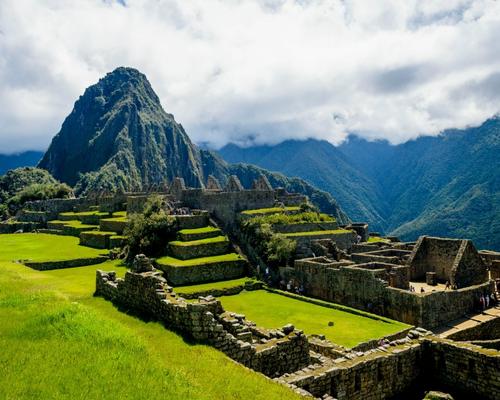 JANUARY
JANUARY
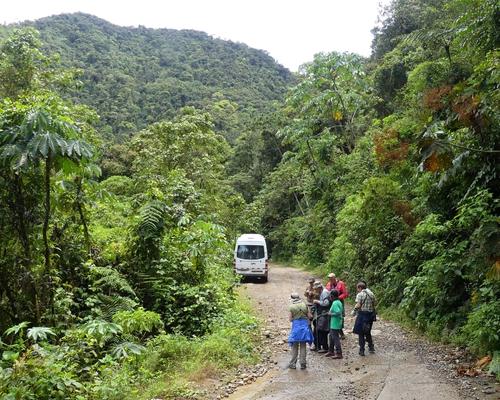 FEBUARY
FEBUARY
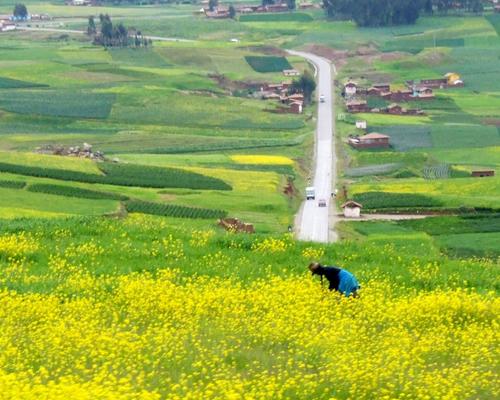 MARCH
MARCH
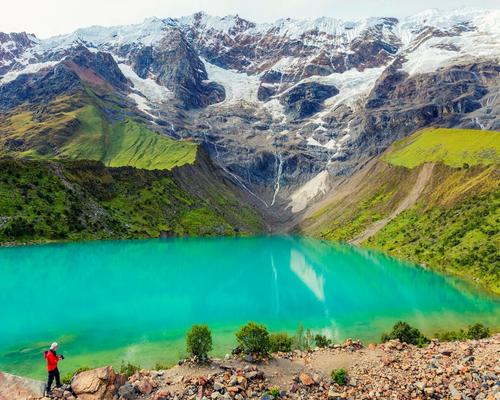 APRIL
APRIL
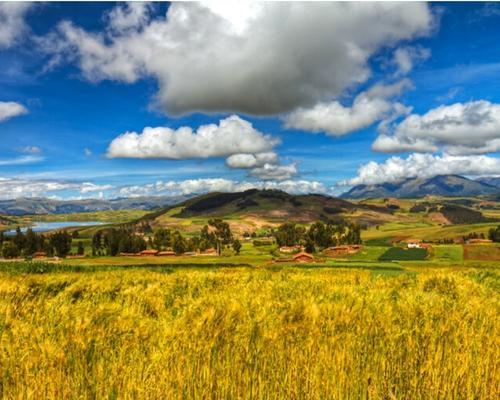 MAY
MAY
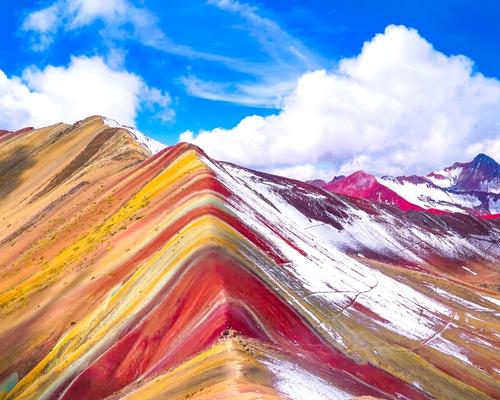 JUNE
JUNE
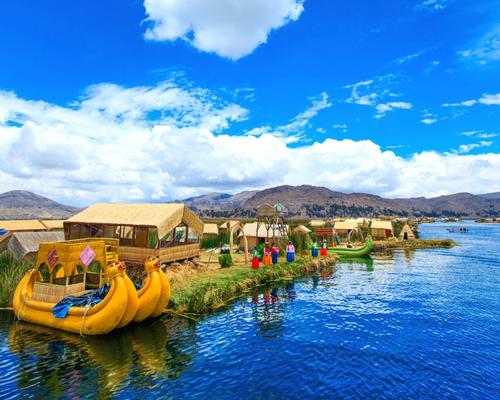 JULY
JULY
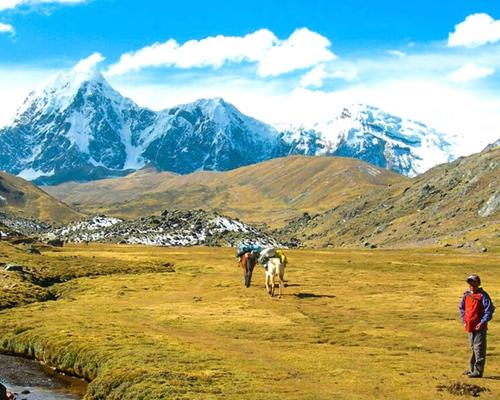 AUGUST
AUGUST
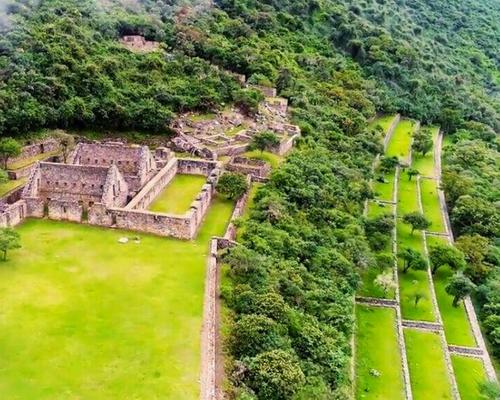 SEPTEMBER
SEPTEMBER
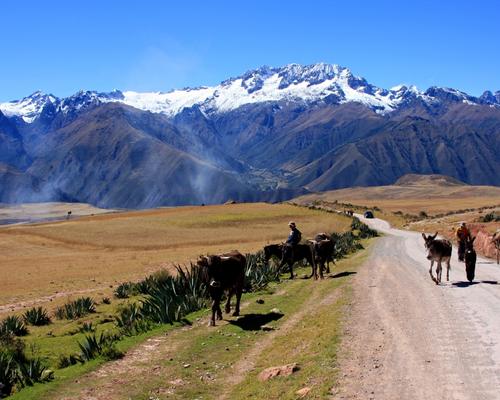 OCTOBER
OCTOBER
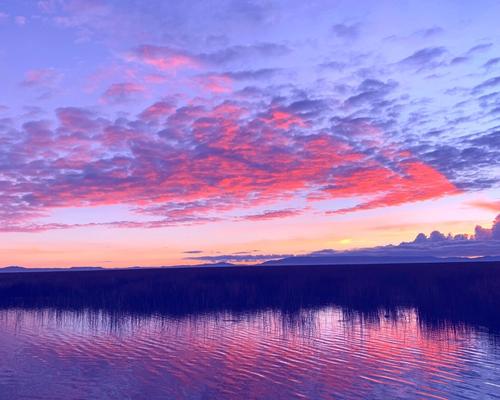 NOVEMBER
NOVEMBER
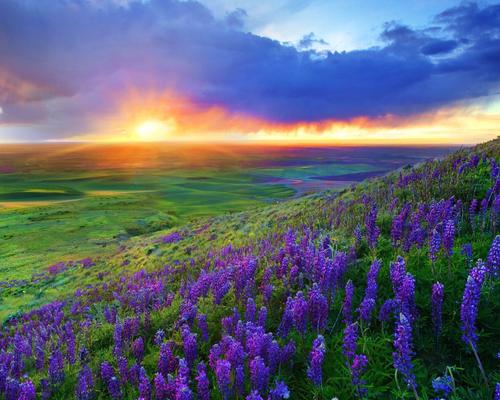 DECEMBER
DECEMBER
To book this tour, a minimum of $ 200 USD per person is required, the remaining balance will be paid upon arrival in Peru, at the Cusco office.
Any other additional information, please coordinate with your travel agent.
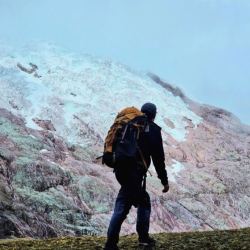
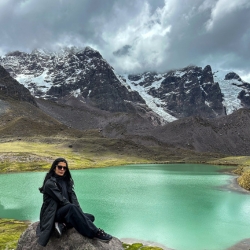
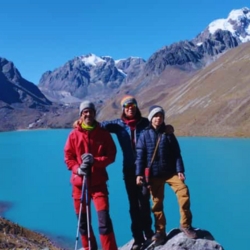
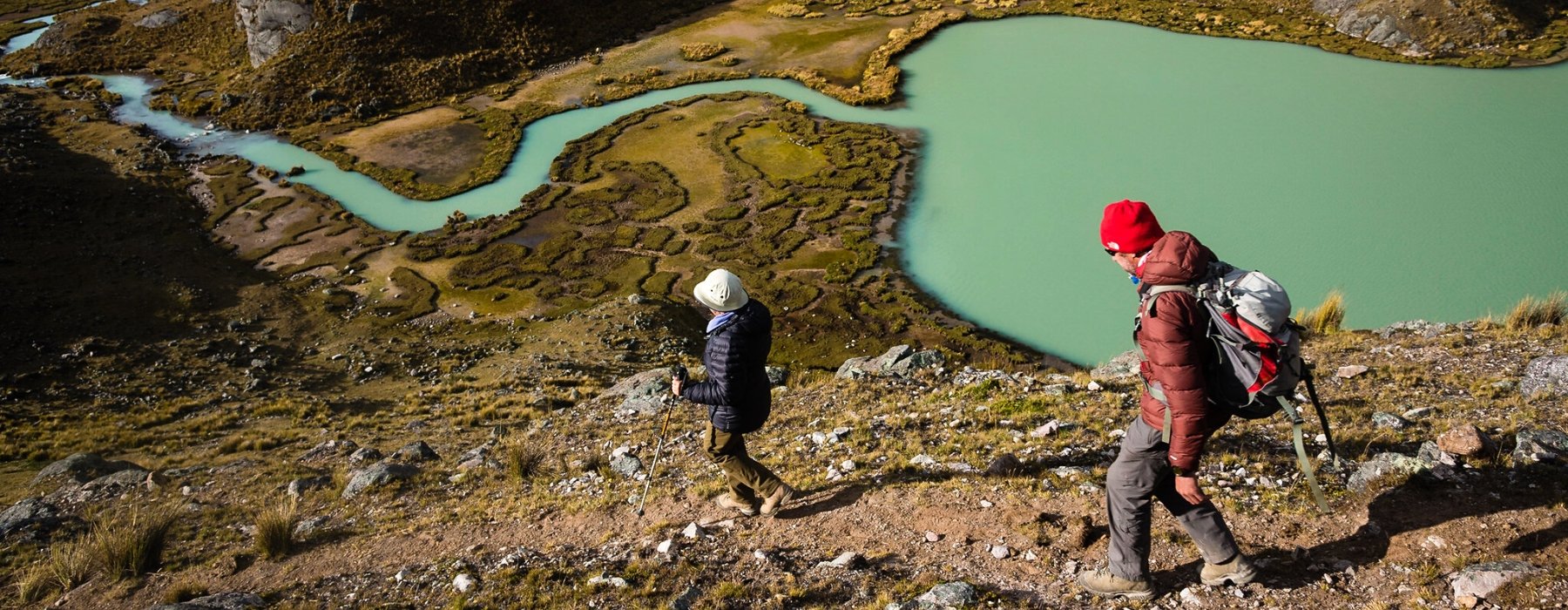
Nothing gets you closer to a country than walking through it, and we’ve got trips to suit walkers of all levels and interests.
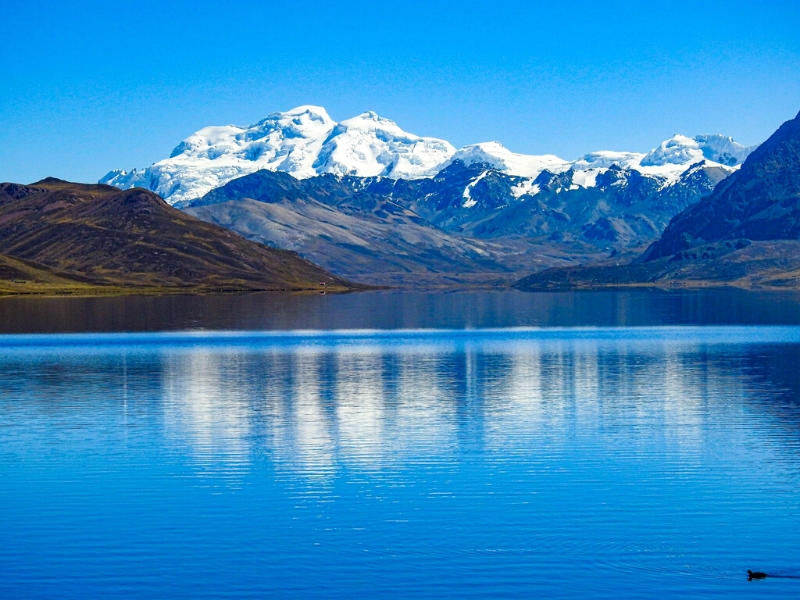
All our Walking trips are graded from ‘Easy’ through to ‘Challenging to Tough’. On our online trip itineraries you’ll find a chart showing the daily walk distances, timings and information on the route including the terrain, altitude. Generally, no specific training is needed but you might feel more comfortable if you’ve got out walking a few times in the lead-up to your trip.
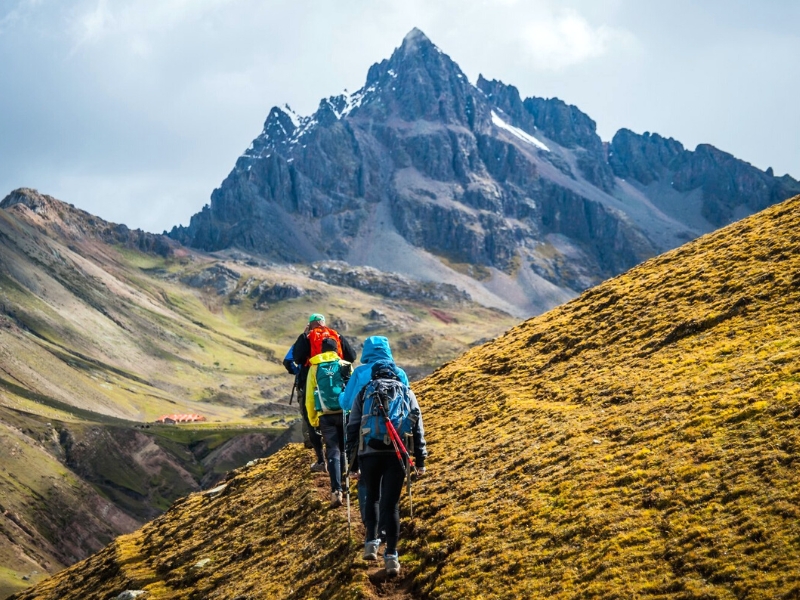
As with all our trips, every group is different but the ‘average’ group consists of roughly half couples and half solo travellers – all sharing a passion for exploring the world on foot. You’ll always have someone to keep you company along the route, but you don’t always have to walk together. Wherever possible your Andean Great Treks leader will allow everyone to walk at their own pace, regrouping regularly along the route.
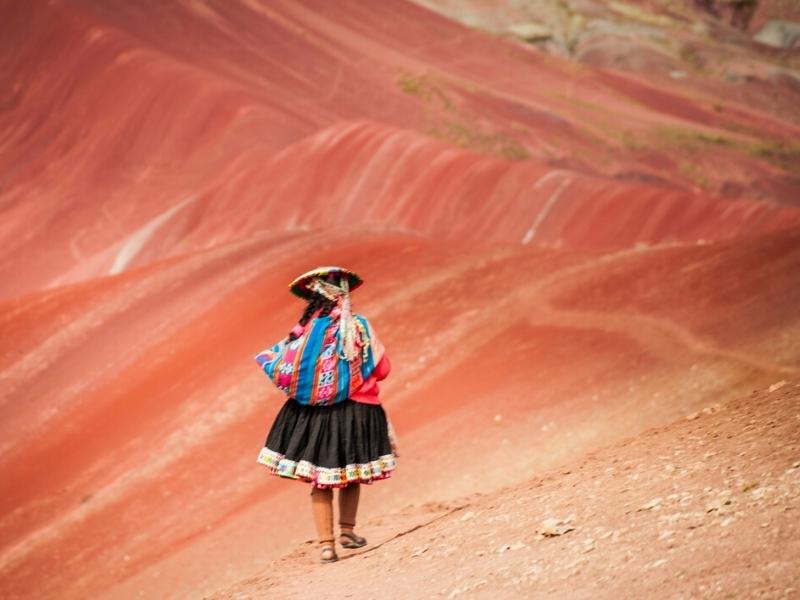
Mostly of our hikes in the mountains in Peru and Cusco like the classic Inca Trail to Machu Picchu, Ausangate Trek, Lares Trek, Ancascocha Trek, Salkantay Trek , involves an average of walking hours of 7-8 hours per day, this timing includes stops for taking photos, lunch, breaks for recovery the energy, and the most important we adapt to your walking pace. This relaxed style of trip involves to know all the attractions in greater depth.
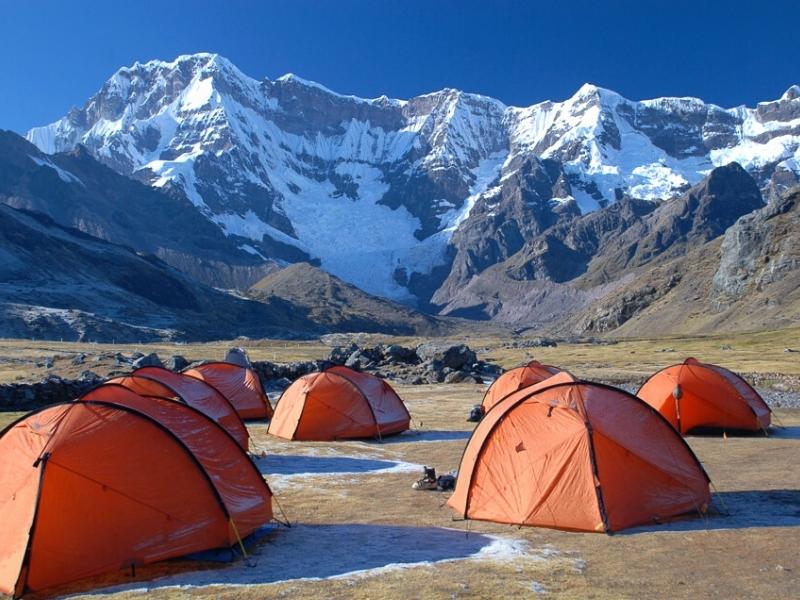
On nearly all our Walking trips, porters or mules will carry all the camping equimpent, so your main luggage will be transported for you. We recommend walk with a light rucksack, you will carry water, snacks, a camera, a small first aid kit and any extra clothing or sun protection. On more remote or challenging treks, additional guides are there to assist the leader tour guide and provide support to the group.
The acclimatization period is very important for our travelers to enjoy the experience. We suggest a minimum of 3 or 4 days of the previous stay in Cusco city, the Sacred Valley of the Incas or Machu Picchu. We recommend you check the acclimation programs we have prepared for you on our website.
The average height of our camps in the trekking circuits is 3,500 masl. In fact, one of the circuits where you sleep at the highest altitude is the Ausangate Trek, where you will have days to set up the tents at a height of 4,300 meters. Remember that Peru has snowy peaks that reach up to 6,700 masl.
From 3,000 meters above sea level, the symptoms of “altitude sickness” vary according to each person, and may even not occur. However, among the most common are a headache, dizziness, nausea, loss of appetite and insomnia. Therefore, upon arriving in the city of Cusco, located at 3,400 meters above sea level, we recommend our travelers to take a good rest, drink plenty of water, eat light meals and take slower walking. Also, it is necessary to avoid alcoholic beverages and cigarettes. The symptoms can be alleviated with high mountain medicines such as DIAMOX or similar products, but we suggest you consult with your doctor before the trip.
While on the trail, hikers will need to carry a daypack (camera equipment, water bottle, extra layers, rain gear, and other accessories you might need on the trail.) Horses and llamas will carry your duffle bag to the next camping site.
The company makes the greatest efforts to provide a safe and unforgettable experience, for this reason, the trekking guides are constantly communicated with the central office through satellite phones, ensuring the welfare of each passenger. Our guides are trained in rescue techniques and first aid in emergency outdoor, these courses are developed annually and have the standards of the wilderness first respond. At all times we have oxygen and first aid equipment. In case of any eventuality a medical director will answer our questions 24 hours a day. In addition to the animals who carry the luggage we have horses to help walkers tired or eager to ride. We recommend getting a travel insurance.
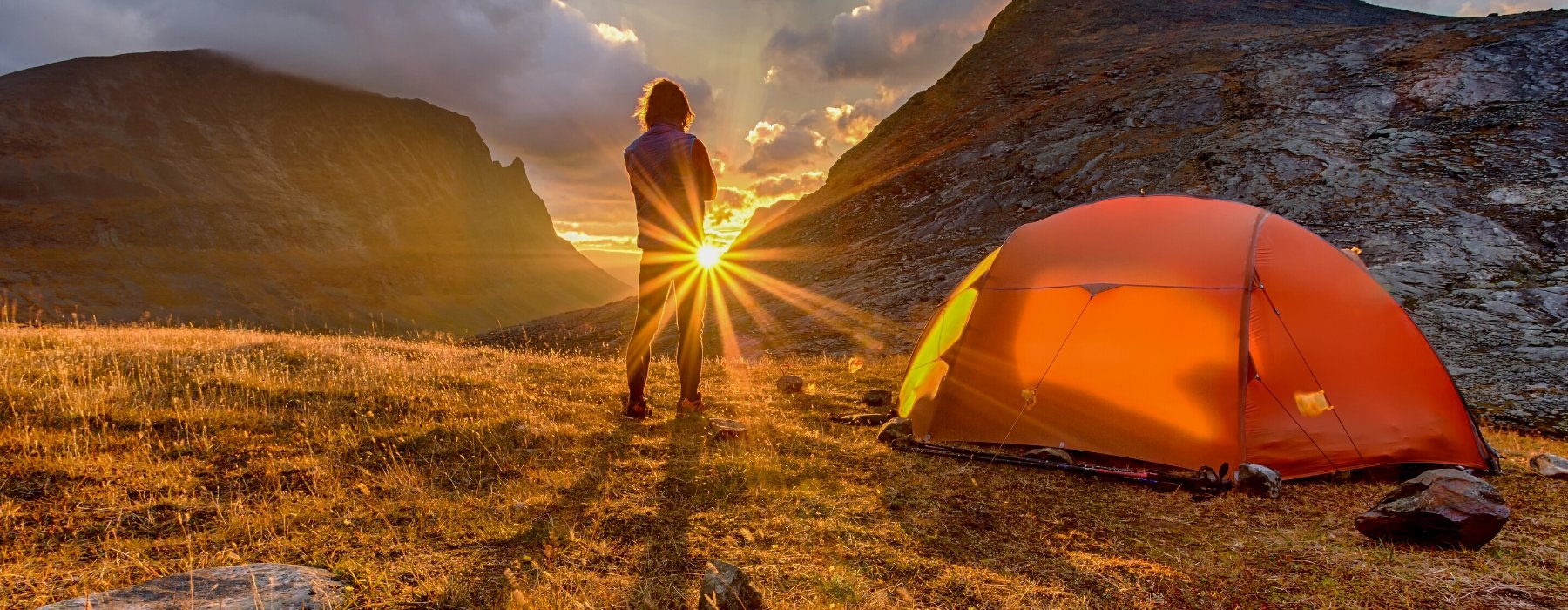
Every Andean Great Treks holiday has been thoughtfully planned and crafted by our specialists. They draw on their own extensive travel experience and the guidance and expertise of our local partners to create superb holidays. Our specialists are committed to making every aspect smooth and enjoyable; they genuinely want to ensure that the holidays they create leave you with wonderful lasting memories.
Every Andean Great Treks traveller is accompanied by an experienced tour guide, you will be immersed in Historic cities, ancient ruins and unfamiliar landscapes are all brought to life by our carefully selected local guides. They want to share their expertise and help you make your own discoveries too; their sole mission is to ensure you enjoy every moment.
Giving you the freedom to make your holiday even more memorable. We know how much our customers look forward to their holiday and we pride ourselves on the choice and flexibility that we offer to enhance every aspect of your experience. Whether it’s getting to the airport, upgrading your room or booking an additional excursion, we can help.
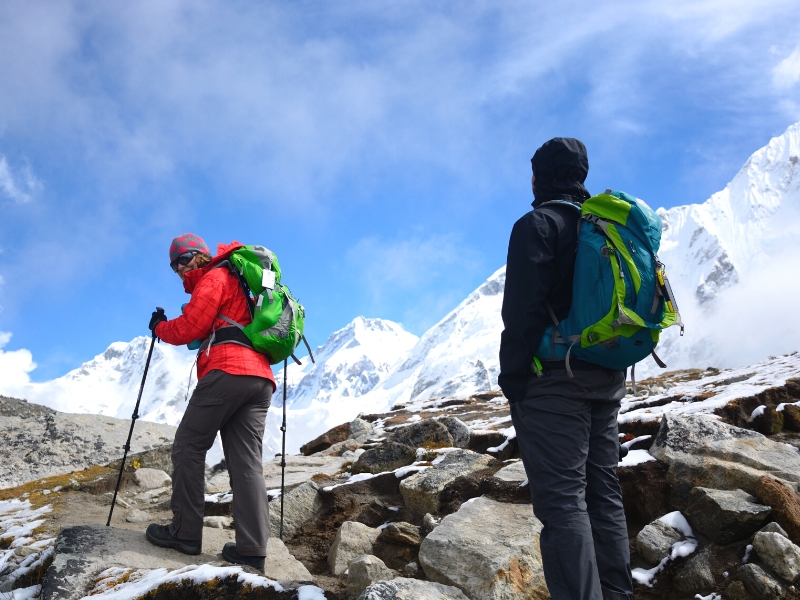
Our guides are the stars of the show; it is their unrivalled knowledge, passion and expertise that will transform your tour experience from good to truly extraordinary!
Because the have grown up in the area and know it like the back of their hand, so they can help you experience whichever aspects most interest you. They’re passionate about sharing their corner of the world with you, and as you explore together, they’ll open your eyes to the intricate details, provide background to enhance your understanding of what you’re seeing, and share stories that will bring everything to life.
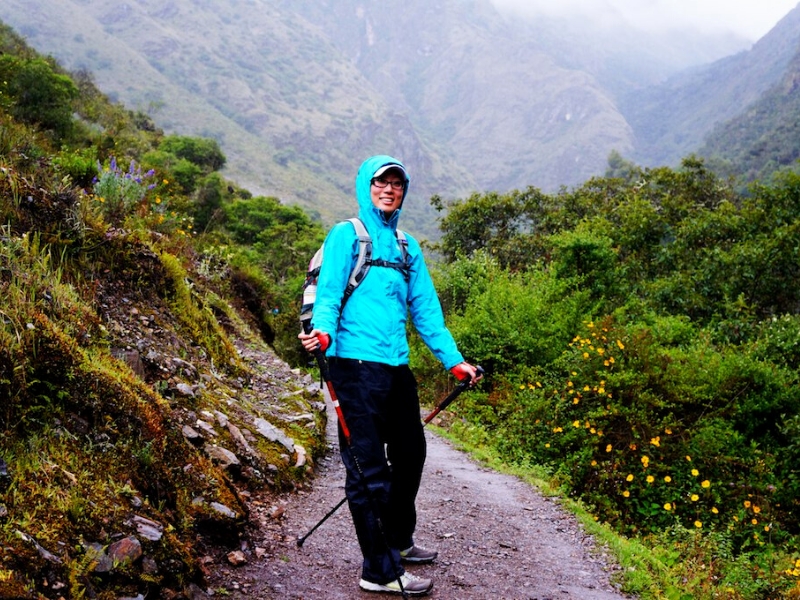
“Your inspiration for a trip can be a single word or a highly evolved outline, but it’s the conversations we have that help us understand the experience you’re looking for. Meanwhile, I’m looking back on the time I spent at the destination.
‘The great thing about working with a specialist at Andean Great Treks is how they take your complete jumble of ideas and turn them into something absolutely spectacular.’
As you begin to share your ideas with your specialist, it will connect them immediately back to a time in their own travels. Conjuring a picture of the rest time they made that same discovery, reminding them how it felt.
Your specialist understands that, when the journey is right, it has the power to excite your emotions in the most profound ways after all, that was the effect on them.
They carry a treasure box of moments, captured over many journeys, into every suggestion they’ll share with you, as they ask you how you want to feel on your trip.
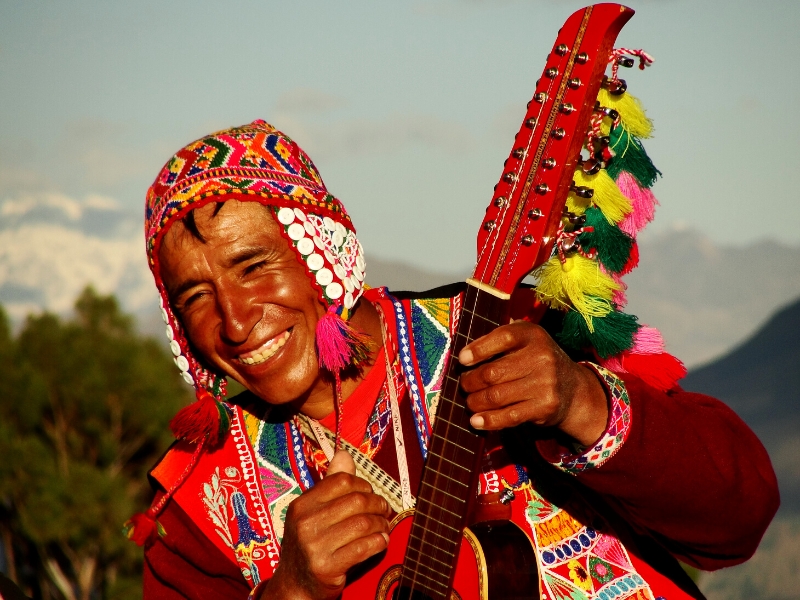
EXPERIENCES THAT CALL TO YOU
It’s what you do in a destination that helps bring it to life. It’s why we strive to choose experiences that help you connect to a place, absorbing a little of its complex character. Wherever your passions lie, we’ll recommend experiences that speak to you, and we’ll recommend the guide or local expert who’s most qualified to help you explore. Packing your holiday full of special experiences means some early starts and long days, but you can be sure that you’ll return home with many incredible memories! Read our Tours and check the Physical Ratings to see if the pace and activity levels are right for you.
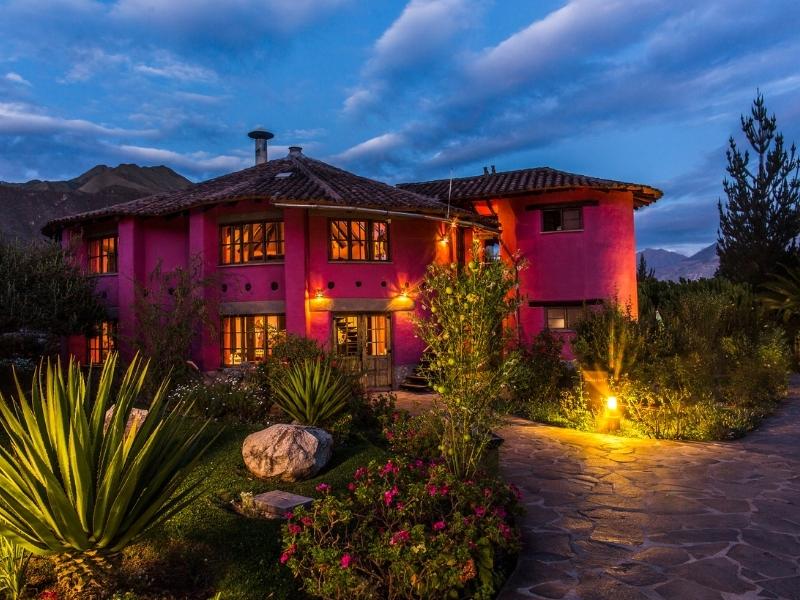
STAYS WITH DIFFERENCE
We know that where you stay is a cherished part of your travels. So, we go to great lengths to find places to stay that exceed expectations, or go above and beyond the ordinary, whether in their character, hospitality, or location. Over the years, we’ve discovered the very best properties, trying and testing them, so we can choose the right one for you. We’ve nourished long-standing relationships with these establishments and the people who founded them, and we’ve stayed there many times often, we’ll even know which rooms have the best views (and reserve them for you).
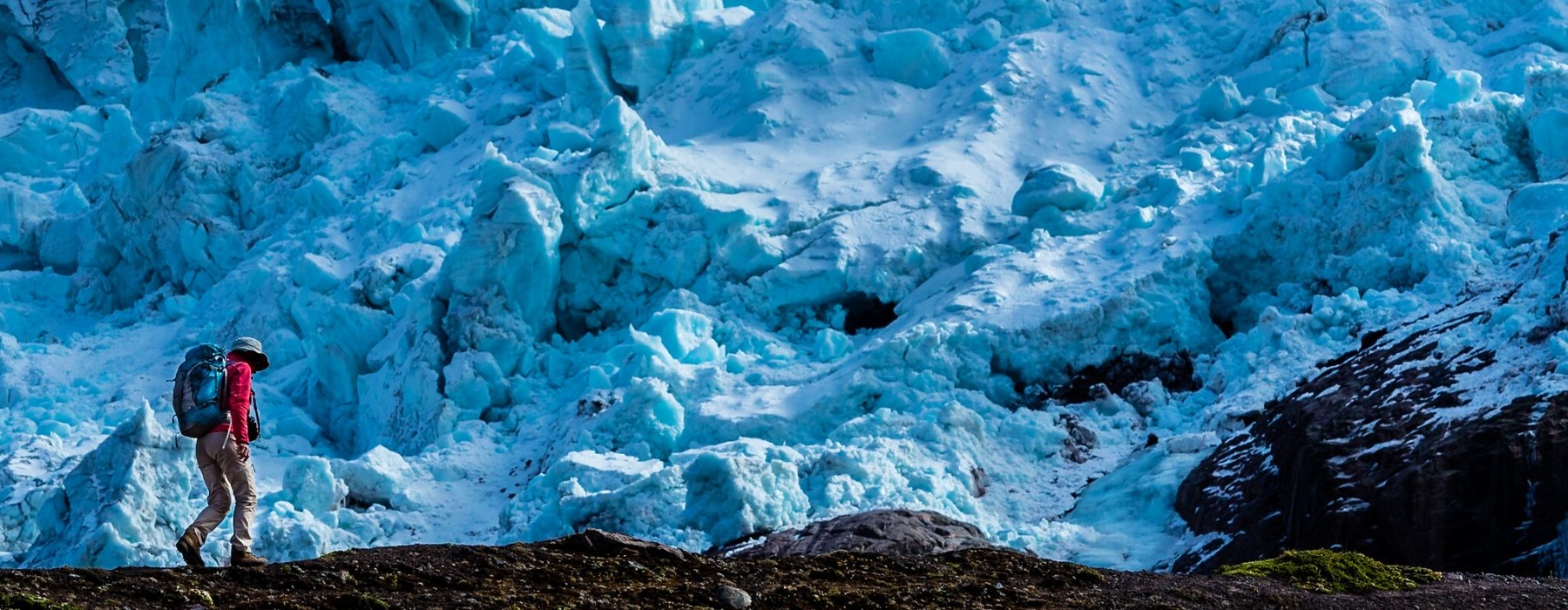
Our style of travel — authentic, thoughtful, and focused on building meaningful connections to the people and places you visit — is inherently respectful and considerate of the destinations we love. We design each aspect of your trip exactly as you want it, which includes its sustainability. That might mean choosing a train journey instead of a flight, staying at eco-friendly wildlife lodges, or opting for experiences that give back to the communities you’re visiting. The choice is yours.
Responsible travel has always been at the heart of what we do. First and foremost, because it gives you the best experience, but, also because it helps to preserve the communities and landscapes you visit. This isn’t new for us we collaborated with local communities and outside experts so we can grow to be better ambassadors.
The most authentic and interesting experiences often directly benefit the local people. We prefer to buy local products that are produced in the organic farms of the Sacred Valley, we also have alliances with local artisan organizations who provide us with souvenir items for our clients, your money directly benefits the local economy.
Our style of travel — authentic, thoughtful, and focused on building meaningful connections to the people and places you visit — is inherently respectful and considerate of the destinations we love. We design each aspect of your trip exactly as you want it, which includes its sustainability. That might mean choosing a train journey instead of a flight, staying at eco-friendly wildlife lodges, or opting for experiences that give back to the communities you’re visiting. The choice is yours.
Responsible travel has always been at the heart of what we do. First and foremost, because it gives you the best experience, but, also because it helps to preserve the communities and landscapes you visit. This isn’t new for us we collaborated with local communities and outside experts so we can grow to be better ambassadors.
The most authentic and interesting experiences often directly benefit the local people. We prefer to buy local products that are produced in the organic farms of the Sacred Valley, we also have alliances with local artisan organizations who provide us with souvenir items for our clients, your money directly benefits the local economy.
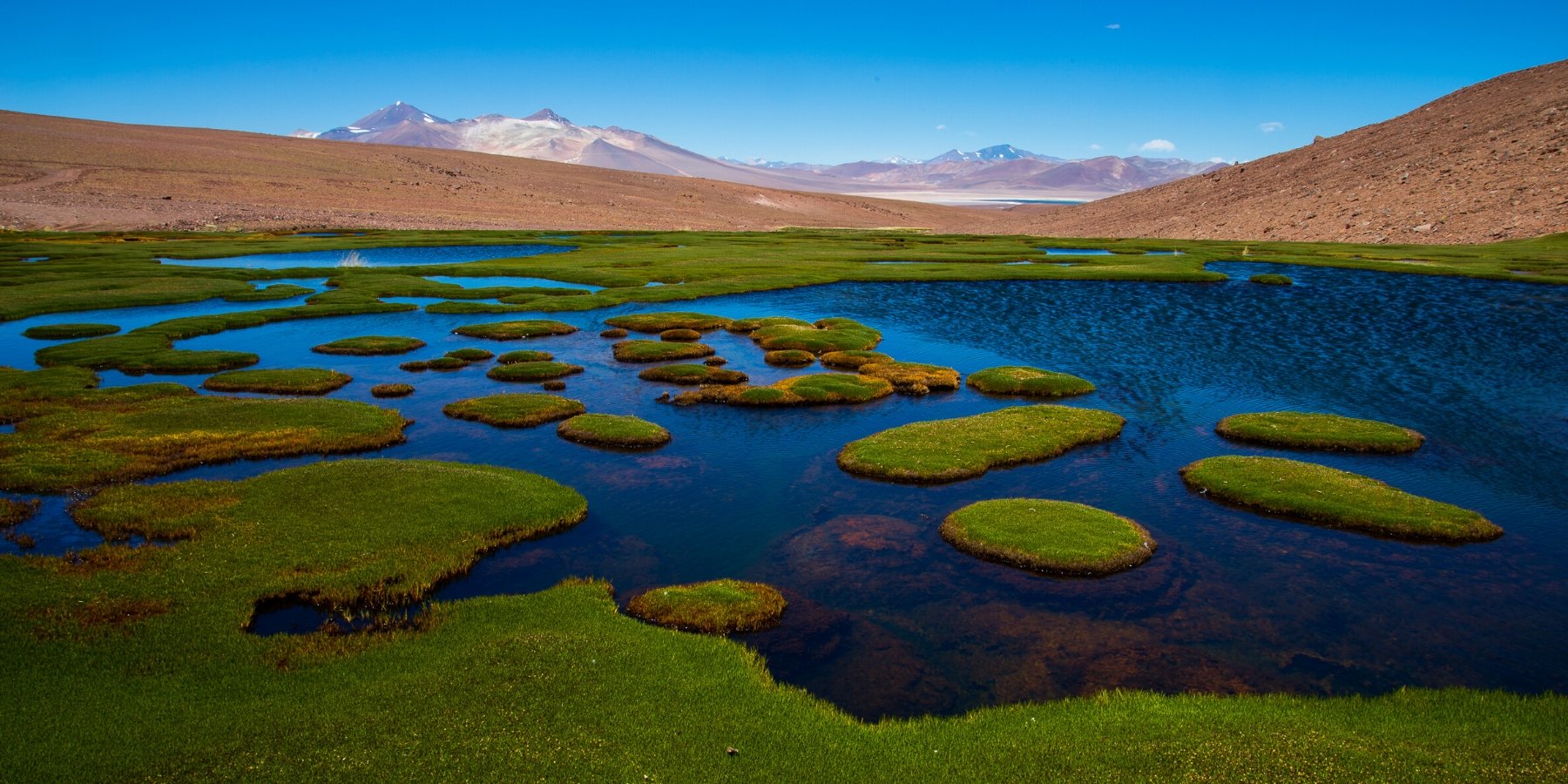
‘There’s a saying: we don’t inherit the Earth from our ancestors, we borrow it from our children. When we show you our country, this philosophy guides everything we do. It’s our responsibility to preserve the environment and wildlife, and support communities. That means using slower modes of transport, like cycling, employing local people, and working with communities who’ll benefit directly from your visit. This also gives you the best, most authentic impression of the places we want to share with you.
We prefer to buy local products in ecological bags, to avoid the use of plastic bags, likewise we teach the use of soaps and ecological products in each tour that we organize. We also work on reforestation projects with local communities who take care of landscape resources such as communal reserves, national parks.
‘There’s a saying: we don’t inherit the Earth from our ancestors, we borrow it from our children. When we show you our country, this philosophy guides everything we do. It’s our responsibility to preserve the environment and wildlife, and support communities. That means using slower modes of transport, like cycling, employing local people, and working with communities who’ll benefit directly from your visit. This also gives you the best, most authentic impression of the places we want to share with you.
We prefer to buy local products in ecological bags, to avoid the use of plastic bags, likewise we teach the use of soaps and ecological products in each tour that we organize. We also work on reforestation projects with local communities who take care of landscape resources such as communal reserves, national parks.
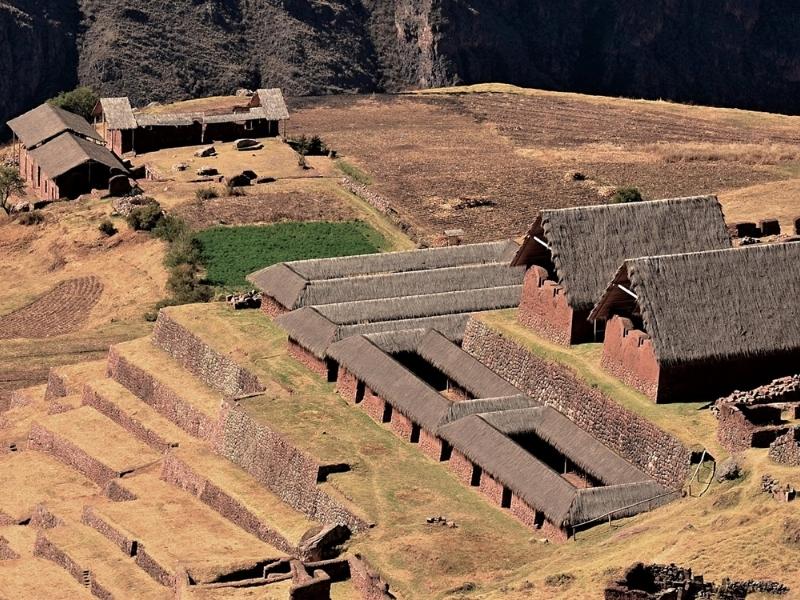
The walk from Huchuy Qosqo to Machu Picchu, is one of the shortest in Cusco, but full of unique landscapes, and towns with ancient traditions. This circuit is recommended for tourists who want to know little-visited places, with a camp from where you can see a unique sunrise of the Sacred Valley of the Incas.
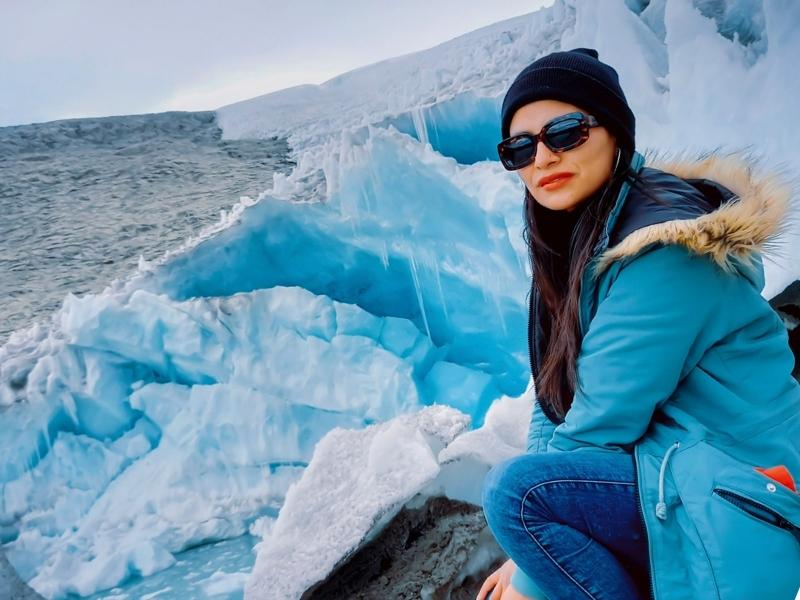
Explore the impressive red valley and Vinicunca Mountain of Colors. Visit the largest tropical glacier in the world Quelccaya next to the beautiful blue Sibinacocha Lagoon, surrounded by snowy peaks and plains inhabited by llama herders.
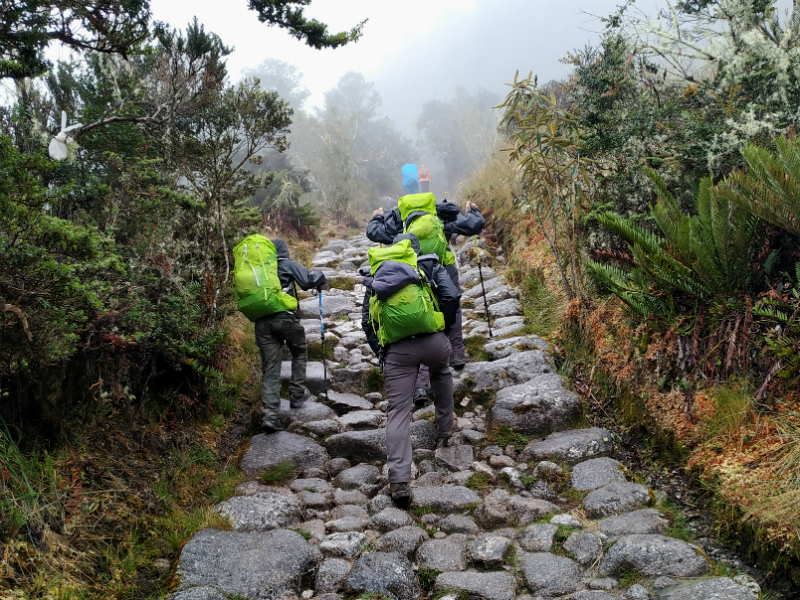
Salkantay Trek and the Inca Trail Hike to Machu Picchu, you will enjoy the impressive landscape,with an incomparable variety of flora and fauna,snowy peaks,bird watching.